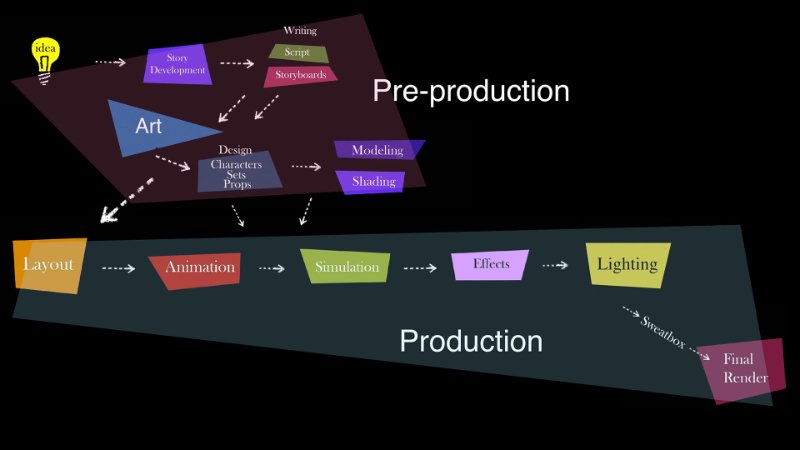Within the domain of filmmaking, there has persisted an ongoing discourse regarding the comparative expense between animation and live-action production. Each avenue presents distinctive avenues for artistic expression while carrying their own fiscal burdens. Delving into the nuances of both can unveil the elements that influence their individual financial outlays.
Unraveling the Tapestry: The Economics of Animation
Animation, a realm where creativity intertwines with technology, has long been hailed as a beacon of imagination in the cinematic world. However, behind the mesmerizing visuals and captivating stories lies a complex economic landscape. Let’s delve deeper into the factors that contribute to the perceived high cost of animation production.
Labor of Love: The Artistry Behind Every Frame
At the heart of animation lies a meticulous craftsmanship that demands skilled artisans and technicians. Each frame is painstakingly crafted by a team of talented individuals, from character designers sketching out the nuances of personality to animators breathing life into these creations. Here’s a breakdown of the labor-intensive process:
- Character Design: Artists conceptualize and refine characters, ensuring they resonate with the audience and fit seamlessly into the narrative;
- Storyboarding: A crucial stage where the storyline is visualized through a sequence of sketches, setting the foundation for the animation process;
- Animation: Artists bring characters to life through movement, expressions, and gestures, requiring precision and attention to detail;
- Compositing: The final touches are added, blending animation with backgrounds, special effects, and sound to create a cohesive visual experience.
The Technological Tapestry: Investing in Innovation
As animation technology evolves, so do the tools and infrastructure required to produce cutting-edge content. While these advancements offer unparalleled creative possibilities, they also come with a hefty price tag. Here are some essential investments in animation technology and infrastructure:
- High-End Computers: Powerful workstations equipped with specialized hardware accelerate rendering and animation processes, reducing production time;
- Software Licenses: Access to industry-standard software suites such as Autodesk Maya, Adobe After Effects, and Toon Boom Harmony is essential for seamless workflow integration;
- Rendering Farms: Complex scenes and high-resolution animations necessitate vast computing power, often provided by render farms to expedite rendering times;
- Motion Capture Systems: For realistic character movements, motion capture technology captures the nuances of human motion, enhancing animation quality.
The Dance of Iteration: Perfecting the Art
Unlike live-action filmmaking, where adjustments can be made on the fly, animation thrives on iteration. Each tweak or modification to animation sequences or character designs can trigger a domino effect, requiring extensive rework. This iterative nature of animation contributes to prolonged production timelines and increased expenses.
Navigating the Realm of Creative Freedom
Animation grants filmmakers boundless creative freedom, transcending the constraints of reality to craft fantastical worlds and characters. However, this artistic liberty comes at a cost. Here’s how the pursuit of creative excellence impacts production costs:
- Complex Concepts: Bringing imaginative concepts to life demands intricate detailing and sophisticated animation techniques, driving up production costs;
- Artistic Vision: Filmmakers strive to realize their artistic vision, often pushing the boundaries of animation technology to achieve unparalleled visual storytelling;
- Specialized Talent: Recruiting skilled animators, storyboard artists, and visual effects wizards with a knack for innovation is crucial for executing ambitious projects.
Unveiling the Dynamics of Live Action Filmmaking: Navigating Creativity Amidst Constraints
Embarking on the journey of live action filmmaking unveils a labyrinth of creative possibilities intertwined with pragmatic constraints. Unlike its counterpart, animation, live action ventures operate within a distinct realm defined by a delicate balance between artistic vision and fiscal boundaries. Let’s delve into the intricacies of this captivating domain, exploring the nuances of location shooting, talent costs, the interplay between practical effects and CGI, and the diverse scales of production.

Location Shooting: Embracing Authenticity Amidst Challenges
- Authenticity Amplified: Filming on location infuses projects with an unparalleled sense of realism and depth, elevating storytelling by immersing audiences in tangible environments;
- Logistical Jigsaw: Yet, the allure of on-location shoots accompanies a myriad of logistical puzzles. Securing permits, orchestrating crowd control, and orchestrating the seamless integration of crew and equipment in remote locales present formidable challenges;
- Navigating the Terrain: From bustling city streets to serene natural landscapes, each location brings its own set of hurdles. Creative problem-solving and meticulous planning are imperative to surmount these obstacles while harnessing the essence of each setting.
Talent Costs: Investing in Excellence Amidst Financial Realities
- Star Power: A considerable chunk of a live action production budget is earmarked for talent expenses, encompassing actor salaries, directorial fees, and crew wages. The allure of renowned actors or seasoned crew members can substantially escalate costs, necessitating judicious allocation of resources;
- Negotiation Ballet: Skillful negotiation and strategic casting choices can mitigate financial strain without compromising artistic integrity. Balancing the allure of marquee names with emerging talent can yield a harmonious blend of performance prowess and fiscal prudence.
Practical Effects vs. CGI: Harmonizing Realism with Technological Wizardry
- Timeless Craftsmanship: Amidst the digital revolution, practical effects retain their allure, imbuing scenes with a tactile authenticity that resonates with audiences. From elaborate sets to meticulously crafted props, practical effects serve as tangible manifestations of creative ingenuity;
- Digital Marvels: Concurrently, CGI heralds boundless possibilities, enabling filmmakers to weave fantastical realms and breathtaking spectacles. However, the indiscriminate use of CGI can lead to a loss of grounding in reality, diluting the emotional resonance of storytelling;
- Symbiotic Symphony: Optimal synergy between practical effects and CGI engenders a cinematic tapestry that seamlessly blends the best of both worlds. By judiciously integrating these techniques, filmmakers can achieve a harmonious synthesis of realism and technological prowess.
Production Scale: From Intimate Portraits to Epic Sagas
- Creative Canvas: Live action productions span a vast spectrum of scales, from intimate character studies to sprawling epics. The scope of a project exerts a profound influence on its financial footprint, with larger-scale endeavors demanding commensurate resources;
- Budgetary Tightrope: Navigating the financial tightrope entails a delicate balancing act, wherein creative ambitions are tempered by fiscal realities. Strategic resource allocation and meticulous planning are indispensable in optimizing production value within budgetary confines;
- Artistic Versatility: Regardless of scale, every live action endeavor serves as a testament to the boundless creativity and ingenuity of filmmakers. From modest independent productions to blockbuster juggernauts, each project leaves an indelible imprint on the cinematic landscape, enriching audiences with its unique narrative tapestry.
Conclusion
In the timeless discourse surrounding the comparative expenses of animation versus live-action filmmaking, there emerges no unequivocal victor. Each realm proffers distinctive avenues for artistic expression while entailing its own array of fiscal deliberations. Animation, characterized by its meticulous labor and technological prerequisites, frequently necessitates a substantial financial allocation. Conversely, the realm of live-action filmmaking introduces its own hurdles, encompassing expenses related to talent acquisition and logistical arrangements for filming locales. Fundamentally, the financial outlay of a cinematic endeavor—be it animated or live-action—is subject to a myriad of influences, including the intricacies of creative vision, the magnitude of production, and the exigencies of technological advancements.



